External LinkPlaceKeepers is an initiative to equip Black residents and stakeholders in Northeast Oklahoma City (OKC) to become residential and commercial real estate developers. The goal is to overcome generations of intentional suppression by engaging residents as real estate developers, business owners, and job creators. PlaceKeepers does this through providing people with structured training, mentoring and access to resources. By empowering residents to become builders and developers, it spurs local development that meets local needs, builds local wealth, and encourages local control of community assets. PlaceKeepers is an initiative of External LinkNortheast Oklahoma City Renaissance (NEOKCR), a comprehensive community development organization focused on restoring economic activity in Oklahoma City’s disinvested Black communities while preserving the area’s historically vibrant culture.
About Quintin Hughes, Sr., and DeAndre Martin
Quintin Hughes, Sr., and DeAndre Martin discuss PlaceKeepers’ origins, activities, and challenges with Steve Shepelwich, a senior community development advisor with the Kansas City Fed.
Quintin Hughes is a proud resident of Northeast OKC and advocate for a Northeast Renaissance that improves the quality of life for current and future residents in an ethical, inclusive, and innovative manner. “Dr. Q” is a founding member of NEOKCR and partner in Kindred Spirits, a restaurant, bar, and event venue in northeast Oklahoma City. Hughes received a Ph.D. in industrial engineering with an emphasis on engineering education from the University of Oklahoma.
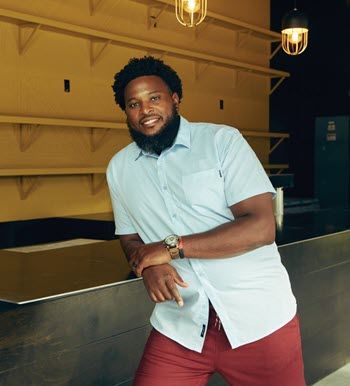
Quintin Hughes, Sr.
DeAndre Martin was born and raised in Oklahoma City. He received his bachelor’s degree in human relations from the University of Oklahoma in 2017. He serves as the director of PlaceKeepers, the project manager for the Oklahoma City Innovation District, and CEO of Monsta Investment Group and XXII East Community Development.
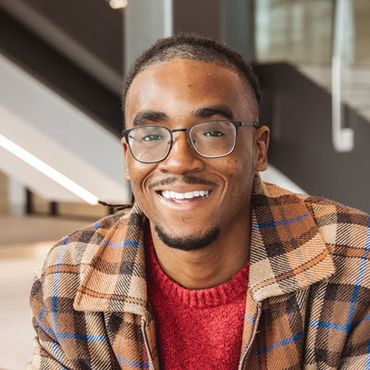
DeAndre Martin
The views expressed are those of the author and interview subjects and do not necessarily reflect those of the Federal Reserve Bank of Kansas City.
The Q & A
Steve: Tell me about your name, PlaceKeepers. What is this idea of place keeping about?
Quintin: The term “place making” has been used for some time around trying to create intentional activities, to bring people to a place and envision it in a way that maybe they hadn't before. Our intention was around trying to remain in a place, keep the culture, and really bring back the historical knowledge about assets, community assets. So, connecting that to this idea around people staying where they are and improving it, and then people coming back to where they're from and being a part of that improvement. We didn't create the term, but we felt like it was perfect for what we were wanting to do.
Steve: This approach can be used in different communities in different ways. What is your community like?
Quintin: We serve Northeast Oklahoma City, a historically Black community with a rich history and culture. The families of many of the folks that are here today were centralized in an area closer to downtown where they were forced to live during segregation. One of the positive byproducts was that the community thrived because they were forced to work within these boundaries and provide their own services and businesses.
What emerged were mixed-income communities, where you might have folks at different income levels all on the same block and have relationships and the connectedness that was rooted out of the same place and the same culture. Over time, there were folks that fought for the opportunity to expand beyond those boundaries, and then you would later see more of this movement out of the community whenever desegregation occurred.
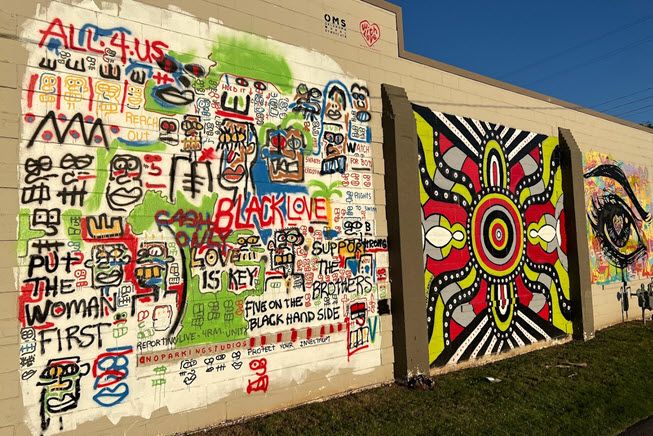
Murals pictured are from External LinkWith Love, a collaboration between OKC activist/artist, JABEE, and the Oklahoma Mural Syndicate, a nonprofit that advocates for and creates public art throughout Oklahoma.
Steve: What is an example of place making that your organization has done that embodies what we're talking about?
Quintin: A prime example of place keeping is what we're doing here at EastPoint. The building that we're in right now is a rehabbed strip mall that was purchased by a minority developer, redeveloped, and then leased in a way that it really created community buy-in and inclusion. It was a response, in many ways, to community needs by focusing on Black business owners, tenants that provide healthy living options such as a health clinic, gym, grocery store, restaurants and a bookstore. Tenants have a pathway to ownership with an equity stake in the space that they operate. This provides a means of countering the potential for increased valuations and costs over time that typically would displace tenants.
Another means of place keeping is building capacity of folks who can be developers and create opportunities for them to also develop here. So, that's really where the work of the PlaceKeepers cohort and training model comes into place.
Steve: You want to talk a little bit about that cohort model?
DeAndre: I could jump in here. The cohort model is a five-week, 25-hour training program led by experienced developers in Oklahoma City. We choose 10 to 15 community members for each cohort. They learn everything, pretty much from A to Z, about doing residential real estate development. We cover everything from sourcing your property, getting your designs, getting your financing, to ultimately selling or leasing your property. After the program, we pair participants with a mentor who helps guide them through a real estate project. Our goal is to have every person that comes through the cohort get into a project.
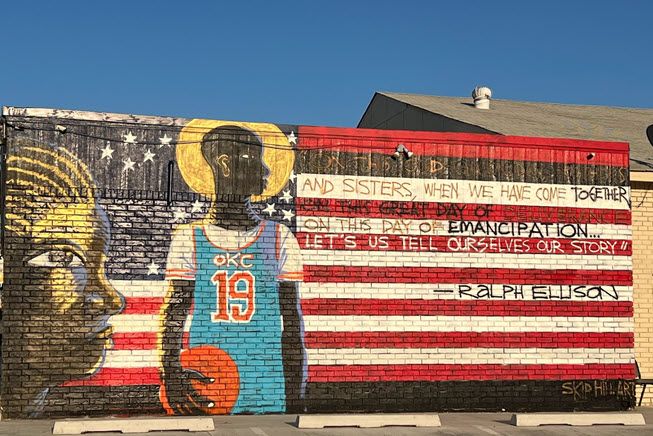
Steve: What's a project that exemplifies what you're looking for?
DeAndre: I will give you two examples on either end of the spectrum.
One participant was a local high school coach who really wanted to learn about development. He came through the PlaceKeepers program and was nervous about doing a full house on his own. He said, "I've always wanted a garage at my house, so what does it look like for me to put an accessory dwelling unit (ADU) in my backyard?" I worked with him on his plans and to get everything built. So, he has his ADU now in his backyard that he can use for a family member or to make money from.
Another cohort member is taking on a more complex project. They are remodeling Marcus Garvey Elementary, which has stood vacant for several years. They are turning the school into a senior living community. They bought land around it to build town homes on, so if your grandmother's staying in the senior community, you can stay close by.
Both developers were part of our first cohort, and they're both taking aspects of what is and making it better instead of saying, "I'm going to tear it down and build something that's completely out of community..."
Steve: What are some of the biggest hurdles you see that participants face in getting started in development?
DeAndre: It's not a hindrance only in our community or just in development, it's for minority business overall, and that hindrance is always the financing or their balance sheet. We don't want their balance sheet to be their hindrance, but it's usually too much debt or not enough savings that is really hindering our PlaceKeepers from getting into projects.
Steve: For a lot of developers, their business balance sheet is the same as their household balance sheet.
DeAndre: Yeah, and that's what people don't realize about real estate development. In some businesses you can get loans that aren't personally guaranteed, or non-recourse business loans, but it's hard to get a real estate or construction loan that's non-recourse. So, you're pretty much personally guaranteeing any project that you're on. If your personal balance sheet isn't in order, you'll still have trouble when it comes to underwriting.
Steve: When you're looking down the road, what do you see as success?
Quintin: We want to see our communities of color revitalized from within. We think that our approach provides tools to help people be the builders. My grandfather was a bricklayer. He built their house, the house that my mother lived in. He was the owner of a business.
We want to do our part in equipping folks in communities of color to be wealth builders and avoid wealth extraction. So, how do we recreate those circular economies within the community? One of those ways is if we build it and it's for us and it's by us, and that other communities of color have the same tools throughout the country.
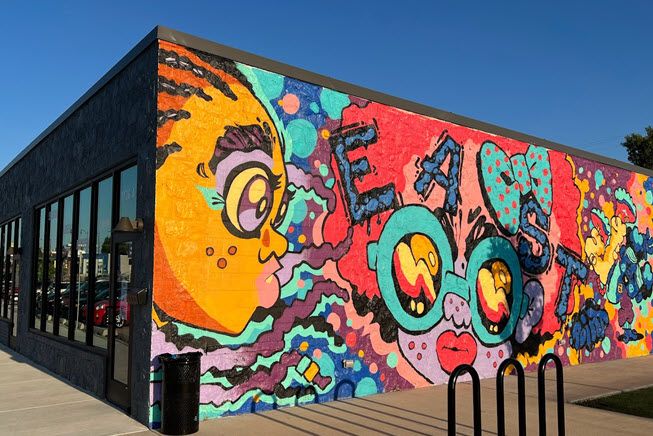
Steve: You focus on training and equipping the builders, the developers, but if you're talking about the circular economy, you'll need appraisers, you'll need bankers. You need everybody engaged.
Quintin: Exactly. Currently within the ecosystem of Northeast Renaissance, there's opportunity to grow in other directions. There are opportunities to support startup innovations, social innovations. If we can be the catalyst for some movement, we don't need to be the owners of it. What we need is for it to happen, and for it to happen in alignment and in coordination. Holistically, that puts our city in a different position than it is now because we're having communities of color get connected to all these ecosystems of success that we've been left out of for a couple of generations.
Steve: You've mentioned how this approach is applicable to other communities of color. What kind of challenge would you put out there for other communities as they hear your story?
Quintin: You should think that if we can do it, you can too. The challenge is not to limit what you can accomplish, as we feel there really are no ceilings. I mean, go out to create opportunities for your community and put yourself out there to build relationships and look at whatever we're doing. We're open source. Meet up with us and we'll try to help you figure out how to start at square one.
DeAndre: That's how we’re doing it!
